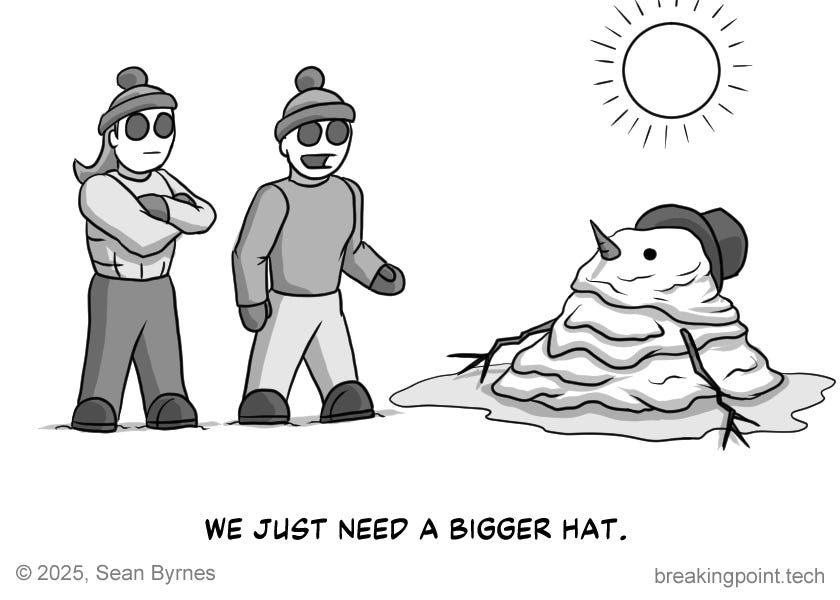Learning the Wrong Lessons
It’s easy to lie to yourself when learning from your own experience.
If you liked reading this, please click the ❤️ button on this post so more people can discover it on Substack. Thanks!
Most startups fail, which means most founders fail (that includes me)! While it’s possible to get lucky with your first company, most founders feel the bite of failure long before we find success, and often afterwards as well.
The pain of failure is intense, and it can be a great teacher. No one wants to repeat the same mistakes again! So we learn those lessons, avoid those mistakes and hopefully do better next time.
However, it’s very easy to learn the wrong lessons from failure. For example, a very common lesson that founders take away from their failure is: “If I can’t do it, no one can. It’s impossible.” That is, of course, not true. But, it can be hard to be humble in the midst of failure and admit someone else might find success where you failed.
Similarly, it’s easy to believe that the reason you failed were all the things you hated doing. For example: “I should have hired a sales person instead of trying to sell myself.” Sales people are great, but if you can’t figure out how to sell your product at first there is no one else that will figure it out either. Sales people need a playbook to work from, and you need to create that playbook by selling yourself even if you hate it.
There is no shortage of these wrong lessons, and you can see how easy it is to fall into their trap! The allure of these lessons is that you don’t have to take personal ownership for the failure, and can point the finger somewhere else.
Here’s a list of common wrong lessons that people take away from failure and why they are wrong:
“The investors are the problem.” If you try to raise investment and fail, it’s easy to blame the investors. You believe you have a great business, so you believe that the only reason they didn’t invest is that they have investment criteria that are too limited. Or, investors don’t recognize your true potential. Instead, realize that investors invest in great opportunities and you were unable to convince them that you were better than other options. The best investors have no specific criteria, and the burden is on you to prove you are the best option for them to invest.
“Customers are idiots.” We all want to believe we have the best product, but even if that is true the burden is on us to convince customers. It is not their fault if they choose other products we deem inferior! The hard reality is that successful companies are built on great marketing more often than great products. We need to reach customers and make our case in a compelling way.
“It was a bad market.” The market might have been bad, in fact, but many great companies are built during bad markets! The market conditions are like the weather, it won’t always be a sunny day. Over the life of your business the market will be good, then bad, then good, and continue. Your job is to find a way through the market conditions, whatever they might be.
The common thread through all of these mistakes is that it’s hard to fully own up to failure. It’s much easier to create a fictional world where you were not the problem, and the failure was due to structural problems in that world.
In short, it’s easier to blame someone else.
The best way to avoid these wrong lessons, in my experience, is to not try and learn lessons right away. If you try to extract lessons as you are failing, or shortly thereafter, it’s impossible to be objective. You need the space of time to remove the emotions and the echoes of the pain. That can be months to years depending on the size and nature of the failure, and how traumatic it was for you. Still, it’s a necessary step.
We will all continue to fail, and that failure will continue to teach us important lessons. Just be careful that you are learning the right ones!
For more on Learning from Experience, see:



Completely agree with giving yourself time away before trying to construct lessons. I think it is better to try again with something new and spot similar actions you are taking that did not work last time and adjust them. That way, you are actively learning and consolidating lessons along the journey rather than trying to generate a formal list of "best practices".